
Shucking Virginia oysters (Ostreidae Crassostrea virginica) in a colonial kitchen. (Courtesy, Colonial Williamsburg Foundation.)
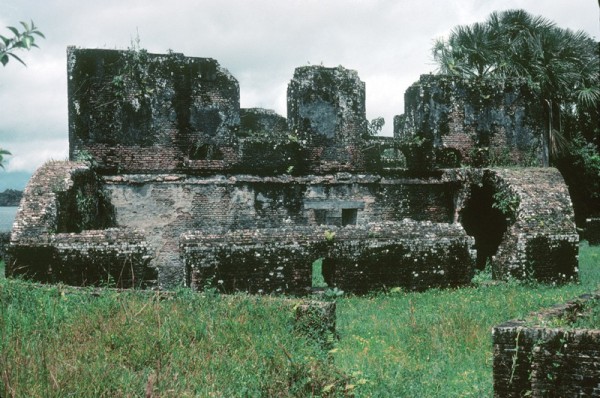
The brick-built Dutch colonial fort on Flag Island, Guyana, 1968. (Photo, Charles H. Kable.)
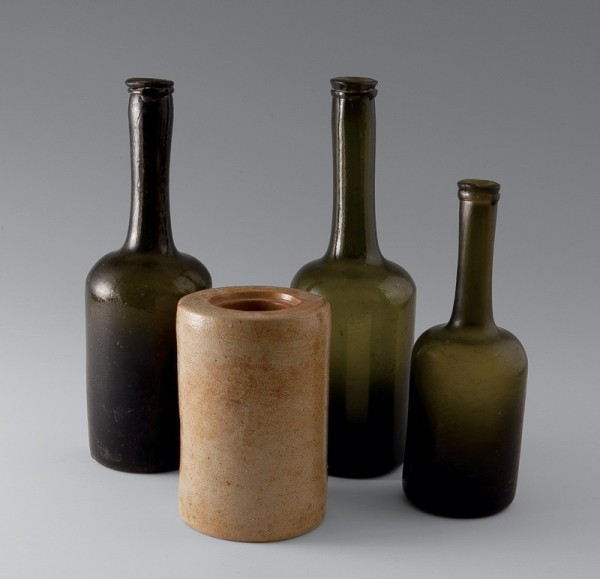
Dutch glass bottles and an enigmatic brown stoneware jar found on Flag Island by diamond prospectors. H. of jar 5 3/4". (Author’s collection; photo, Robert Hunter.)
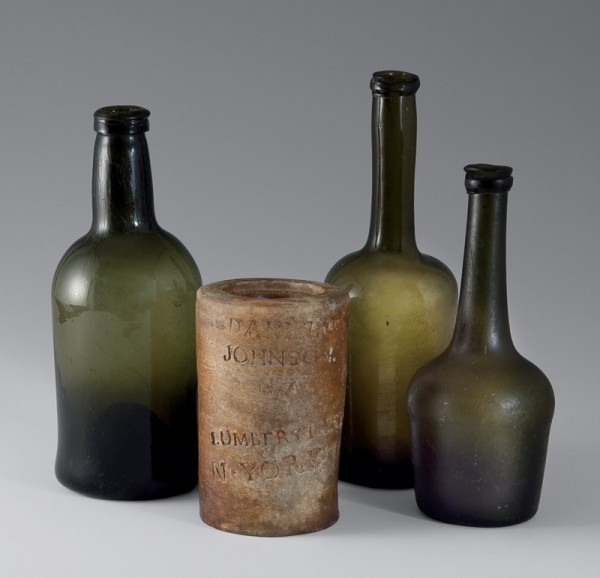
Dutch and English bottles recovered from Flag Island along with the brown stoneware oyster jar illustrated in fig. 5, which bears an impressed inscription for Manhattan oysterman Daniel Johnson. (Courtesy, Susan Williams; photo, Robert Hunter.)
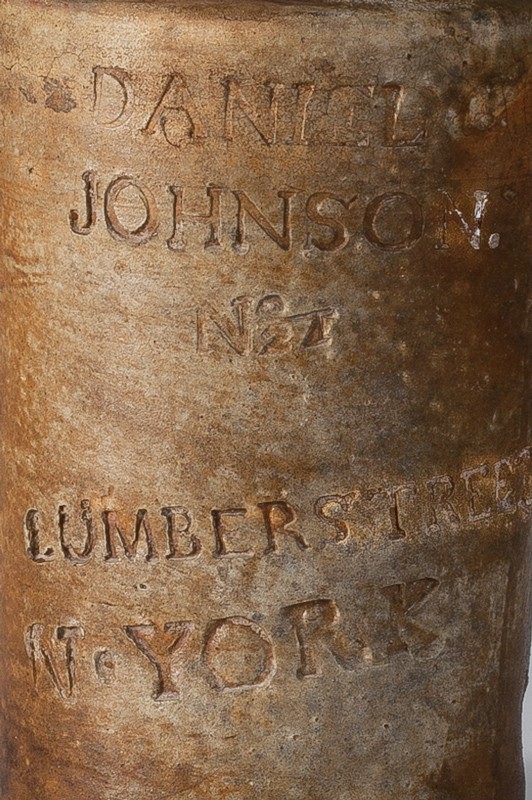
Detail of the oyster jar illustrated in fig. 4, attributed to Thomas Commeraw, New York, New York, 1800–1805. Salt-glazed stoneware. H. 5 3/4". Impressed on side: DANIEL / JOHNSON / NO. 24 LUMBER STREET / N. YORK.

John Montresor, A Plan of the City of New-York & Its Environs to Greenwich, on the North or Hudsons River, and to Crown Point, on the East or Sound River, Shewing the Several Streets, Publick Buildings, Docks, Fort & Battery, with the True Form & Course of the Commanding Grounds, with and without the Town, London, England, 1767 (this copy reissued in 1775), 25 3/8" x 20 5/8". (Courtesy, Colonial Williamsburg Foundation.) Daniel Johnson’s workplace would have faced the East River within the area marked “This overflow is continually filling up in order to Build on.” In the lower right corner of the map, the property marked “Acklands” is the approximate site of Thomas Commeraw’s later stoneware factory. By 1800 the curve identified by the British as Crown Point would return to its old Dutch name of Corlears Hook.
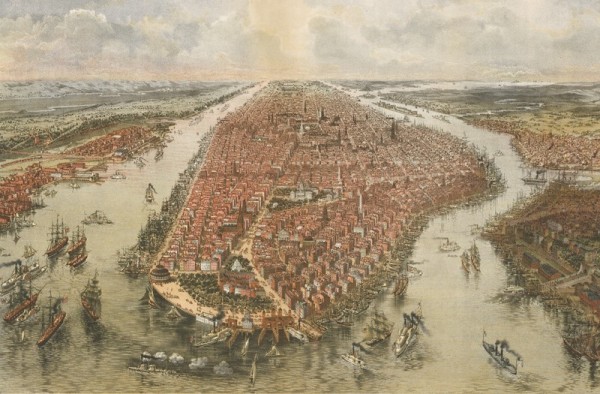
John Bachmann, Bird’s Eye View of New York and Environs, 1865. 31" x 46". Published by Kimmel & Forster, New York. Corlears Hook is being pointed to by the steamship emerging from the inlet at right. (Courtesy, Library of Congress, Geography and Map Division.)
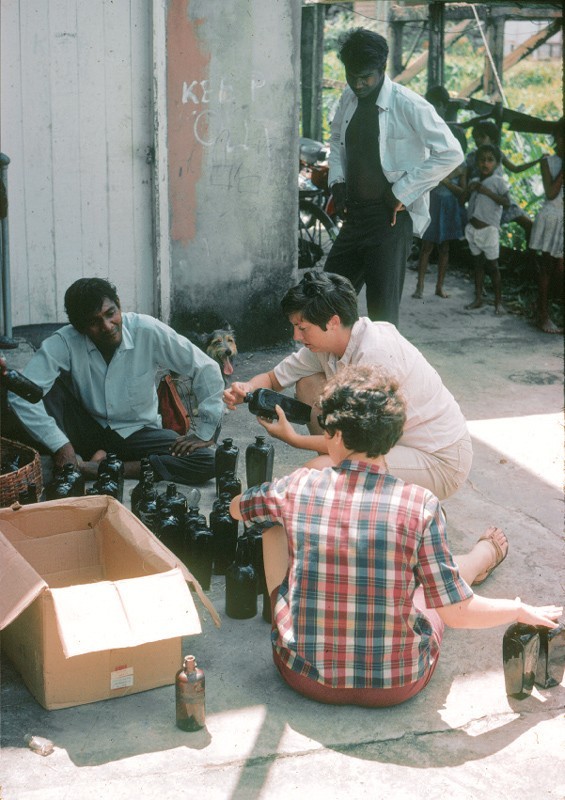
Members of the Kable family bargaining for bottles in Guyana, 1968. (Photo, Charles H. Kable.)
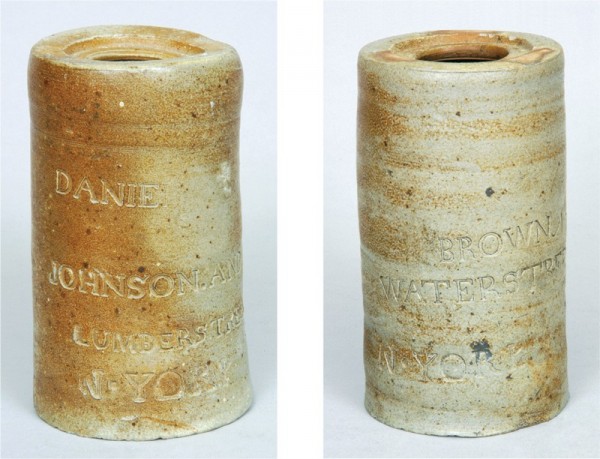
Oysters jars, attributed to Thomas Commeraw, ca. 1800–1805. Salt-glazed stoneware. H. 5 3/4". Left jar impressed on side, DANIEL JOHNSON AND CO. 24 / LUMBER STREET / N·YORK.; right jar impressed on side, BROWN / WATER STREET / N·YORK. (Courtesy, Brandt Zipp, The Thomas Commershaw Project/Cocker Farm, Inc.; photos, Luke Zipp.) The jar on the right was made for William Brown, who was still in business as an oysterman ca. 1810. The history of these jars is unknown, but it is reasonable to suppose that both came from the Guyana source, possibly part of a combined shipment.
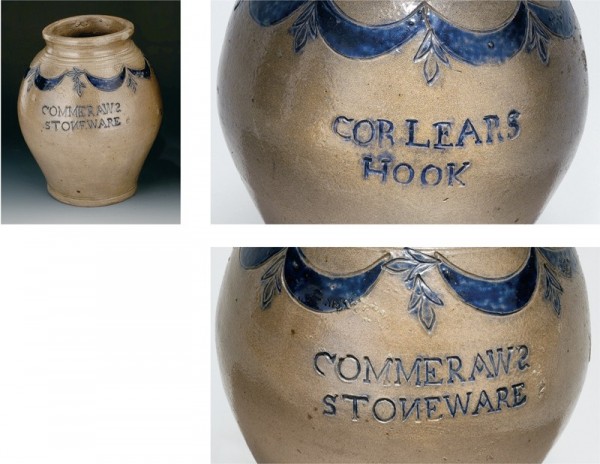
Storage jar, Thomas Commeraw, New York, New York, 1797–1798. Salt-glazed stoneware. H. 8 15/16". Impressed on one side, COMMERAWS / STONEWARE; impressed on the other side, CORLEARS / HOOK. (Courtesy, Colonial Williamsburg Foundation.)
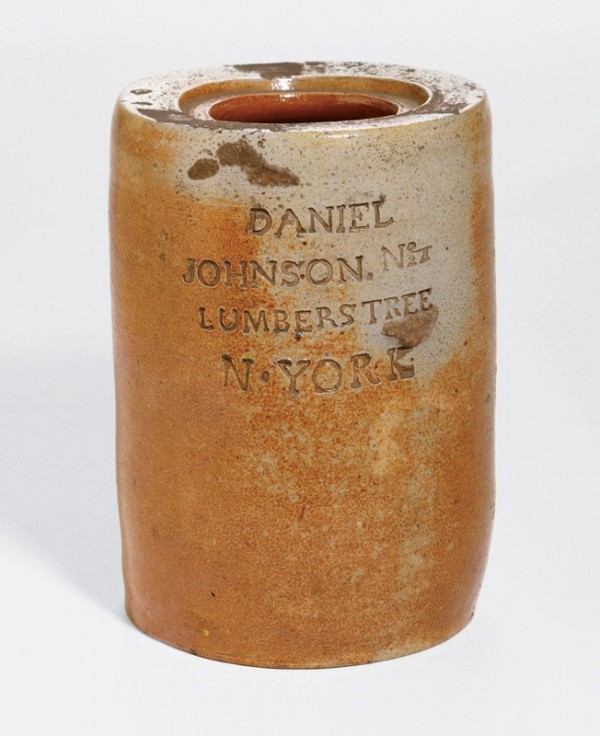
Oyster jar, Thomas Commeraw, New York, New York, 1800–1805. Salt-glazed stoneware. H. 5 3/4". Impressed on side, DANIEL / JOHNSON.NO24 / LUMBERSTREE / N.YORK. (Courtesy, New York State Museum.) This jar from Thomas Commeraw’s Corlears Hook pottery was acquired by the New York State Museum in 1905, the same year that Corlears Hook Park was laid out.
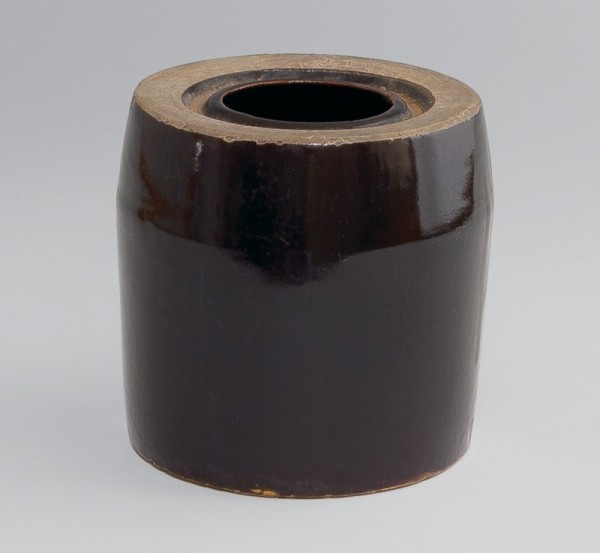
Oyster jar, American, probably New England, mid-nineteenth century. Black-glazed stoneware. H. 6". (Author’s collection; photo, Robert Hunter.) This jar has a recessed lid opening, similar to those of the earlier Commeraw jars.

Oyster jar and a lid, London, England, mid-nineteenth century. Bristol-glazed stoneware. H. 6 1/4". Impressed on jar, IMPERIAL / POTTERIES · STEPHEN GREEN · LAMBETH; impressed on lid, SINGER / VAUXHALL / LONDON REGISTERED NO.4138 DEC 17 1858. D. 3 1/8". (Author’s collection; photo, Robert Hunter.) The jar was found in New England and the lid in a Virginia field.
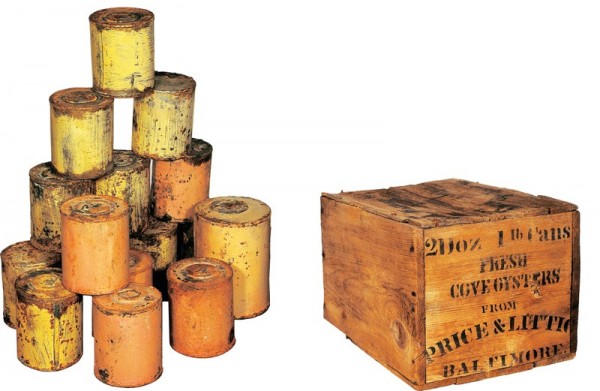
Baltimore wooden shipping crate and its tinplate oyster cans from the 1856 wreck of the steamboat Arabia in the Missouri River. Known as cap-hole cans, these vessels were sealed with solder. (Courtesy, David Hawley, Arabia Steamboat Museum.)
